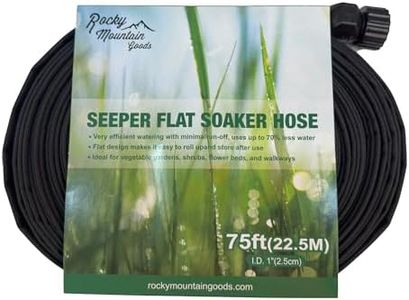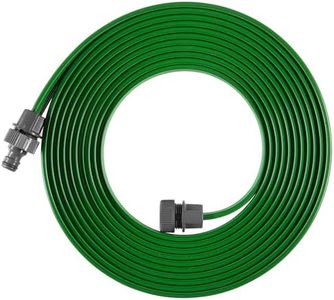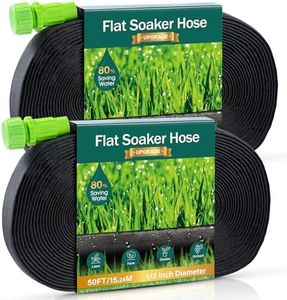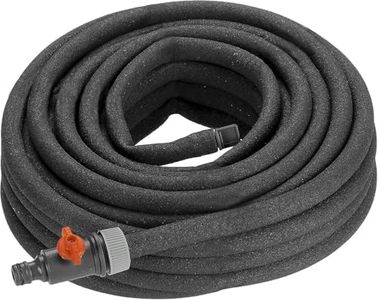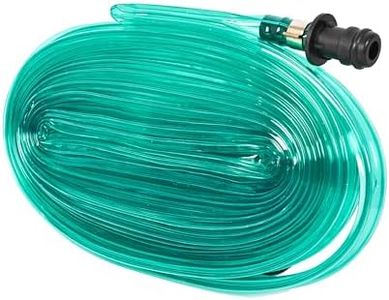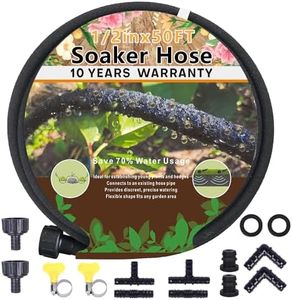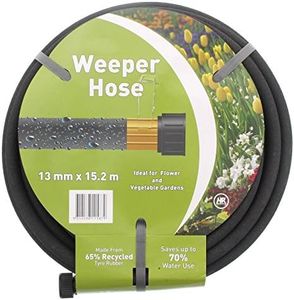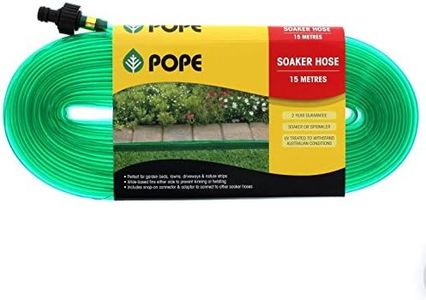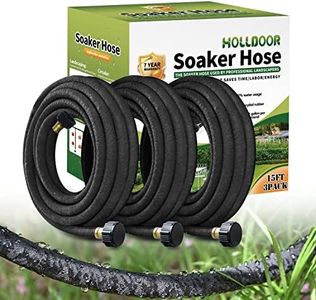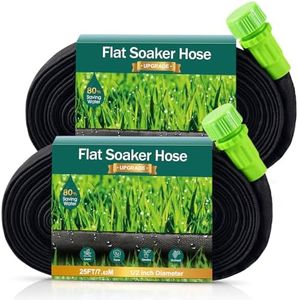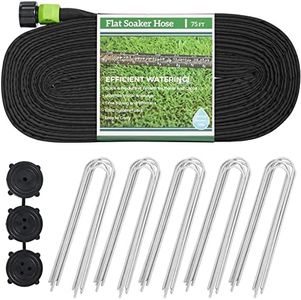We Use CookiesWe use cookies to enhance the security, performance,
functionality and for analytical and promotional activities. By continuing to browse this site you
are agreeing to our privacy policy
10 Best Soaker Hoses
From leading brands and best sellers available on the web.Buying Guide for the Best Soaker Hoses
Choosing the right soaker hose is all about understanding your garden’s needs and the features that will help deliver water efficiently to your plants. Soaker hoses slowly release water along their entire length, allowing moisture to seep directly into the soil. The ideal soaker hose for you depends on the size and layout of your garden, the type of plants you grow, and how much control you want over watering. Focus on durability, length, material, and water emission to ensure your plants stay healthy with minimal waste and effort.LengthLength refers to how long the soaker hose is, which determines how much area you can cover with a single hose. Hoses generally come in various lengths, such as 25, 50, or 100 feet. If you have a small garden bed, a shorter hose may be sufficient and easier to manage. For larger or oddly shaped areas, a longer hose gives more reach, but may require more pressure to distribute water evenly. When picking, consider your garden’s size and layout—measure the distance you want to cover and choose a length that fits or can be adjusted by connecting multiple hoses if needed.
DiameterThe diameter indicates how thick the hose is, usually ranging from 1/4 inch to 5/8 inch. A smaller diameter hose can be handy for gentle watering in smaller spaces or containers, as it releases water more slowly and is easier to weave through tight spots. Larger diameters let out more water faster and are better for watering bigger areas, but may also require higher water pressure. Your choice should match both your water source pressure and your garden’s watering needs. If your water pressure is low or your plants need slow, deep watering, a thinner hose might be best.
MaterialSoaker hoses are commonly made from recycled rubber, polyurethane, or a mix of materials. Rubber hoses are durable, flexible, and can last many seasons, especially in sunny or rough conditions. Polyurethane options are lighter and less likely to kink, but may not last as long under harsh weather. Consider how much sun, heat, or physical movement the hose will face, and select a material that suits your climate and how often you plan to leave it out or move it around.
Water Emission RateThis spec refers to how much water the hose releases per hour, typically measured in gallons per foot per hour. A lower emission rate is good for clay soils or delicate plants that require slow watering to absorb moisture without runoff, while a higher rate suits sandy soils or thirsty plants that need more water quickly. Check your soil type and plants’ needs before choosing; a moderate emission rate fits most general gardening, while specialized gardens may need specific flow rates.
FlexibilityFlexibility determines how easily you can bend and position the hose to fit your garden’s shape. Some hoses are stiffer and hold straight lines well, while others are soft and can curve around beds or obstacles. If your garden has lots of tight corners, uneven edges, or raised beds, look for a highly flexible hose that doesn’t kink easily. For long, straight rows or simple layouts, a firmer hose might be easier to keep in place.
UV ResistanceUV resistance indicates how well the hose stands up to sunlight exposure. If your hose will often be left exposed to the sun, UV-resistant materials will prevent it from cracking, splitting, or breaking down quickly. If you plan to bury the hose under mulch or soil, UV resistance is less important. Consider the installation method you’ll use and the climate in your area to decide how much this spec matters for your garden.
Connection TypeThe connection type describes how the hose connects to your water source or to other hoses, such as threaded, push-fit, or quick-connect ends. Standard garden hose fittings are most common and compatible with most home setups. For more complex watering systems, look for hoses that can easily link together or work with timers and splitters. Choose a connection type based on your existing gear and whether you want to expand or automate your watering setup in the future.
